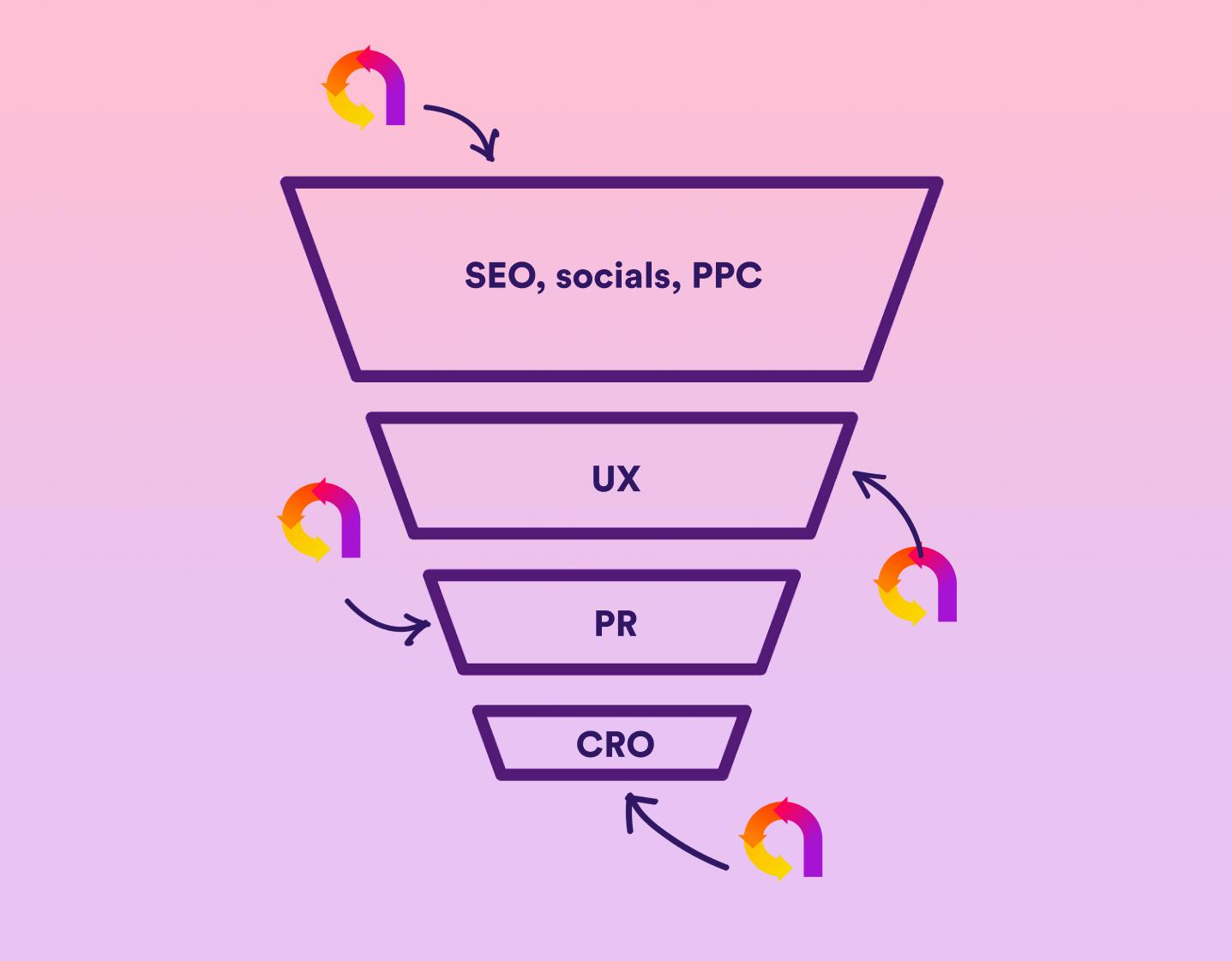The framework behind many marketing activities often originates from a marketing funnel. Broken down into various buying stages, marketing funnels have continued to evolve to factor in the ever changing digital landscape.
At a funnel’s core lies two key questions that serve its purpose:
What problem/s does my audience have and how can I help solve them?
So, how does a specialist digital experience agency like iterate fit into the picture? It’s easy to separate CRO, UX, and SEO into its own little niche, however, at the heart of what we do, those same two questions remain prominent.
Let’s break down each stage more closely to make it easier to dissect!
Awareness
The top of the funnel requires an understanding of your ideal customer/audience to ensure you are providing value upfront. Key questions to consider within the awareness stage include:
How am I providing the answers to questions that my audience have?
This is typically done through the development of content of value that helps to answer your audience’s concerns, while positioning your brand as an authority and thought leader in your field. Consider expanding the delivery of content in this stage through a number of different formats, and identify ways to also increase shareability offsite.
To maximise your efforts, developing a content strategy will ensure these outputs align with your overall business objectives, and a wider SEO plan. Content types that are effective for awareness include blog articles, informational videos, guides.
How can I diversify the channels I use to increase reach and appeal to my audience?
Whether you think the marketing rule of 7 engagements before purchase applies to your particular product or service or not, we can all agree that multiple interactions with your audience increases the likelihood that they will do business with you. Identify key channels where you are likely to reach your audience and ensure that you have targeted content that will aid the key messages you are trying to get across.
Channels that lead well during the awareness stage include social media, public relations, and content on your website.
Make sure you can effectively measure engagement and lead metrics for key channels to see where you are getting the most value and find opportunity areas.
Consideration
Now that you have highlighted a potential solution and alleviated some of the user’s concerns, think about how you can stand out from the crowd.
How can I convince my audience of the value my solution offers?
Push your audience along the path to purchase by giving them a sample of what they can experience if they were to purchase. Ensure these key call-to-actions are prominent on your website, with appropriate tracking parameters set up so you can see how well these perform. User testing can help you explore ways to improve these conversion points and give the user a better experience.
A number of options are available for you to give your audience a taste of your offering before they become customers, such as signing up for a trial or demo, downloading available resources, or an initial consultation.
This also provides the opportunity to capture interested buyers who may not be ready to purchase now so you can re-engage with them in the future.
How can I build trust and authority towards my brand which showcases my unique selling proposition over my competitors?
Referral leads drive the highest return on investment as they come from a trusted source. Given this, it’s a lot more powerful when you have others vouch on your behalf.
Consider the following content types to help build credibility and trust gained by your existing relationships: case studies, testimonials, reviews.
Purchase
Let’s be honest, this stage in the funnel is the most important for many people, but you can’t get there without getting people through the higher stages.
You have given your potential buyers all they need to sign on the dotted line, however, their experience at the point of purchase is critical. Not to be underestimated, this stage will make all the difference between having a new customer or one that could have been.
What barriers are in the way of securing a new purchase or conversion?
An easy task you can do to start with is to map out all the steps you need to take from your website homepage in order to be counted as a conversion. Break down the steps and review how the process can be simplified. The experience they have in this stage of the funnel needs to be consistent with their very first engagement.
For continuous refinements of your conversion experience, consider gaining deeper insights through tracking points of conversion and implementing conversion rate and user experience optimisations.

